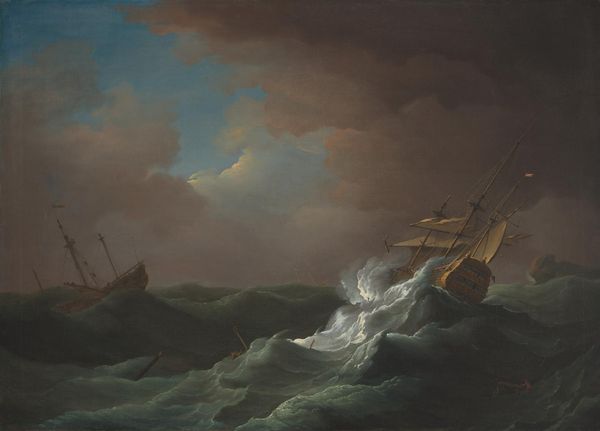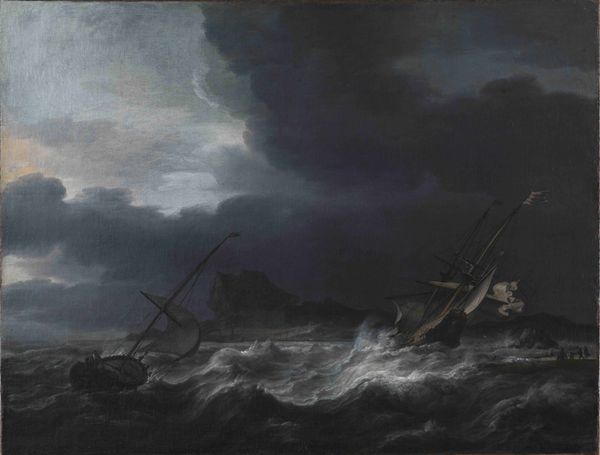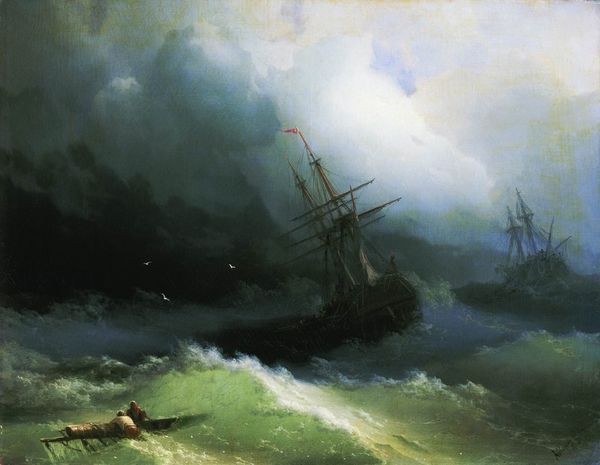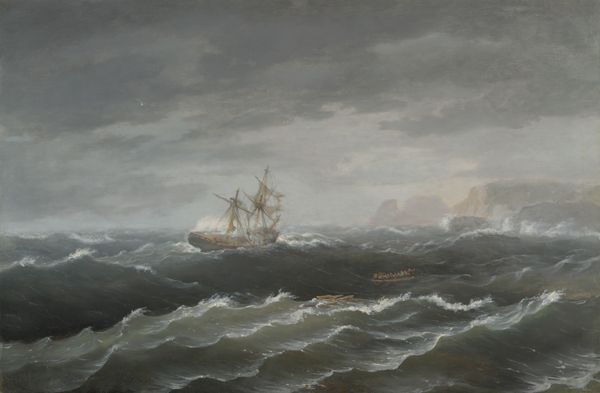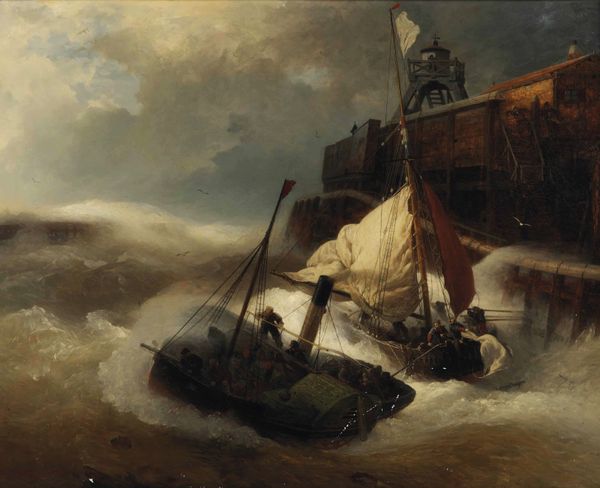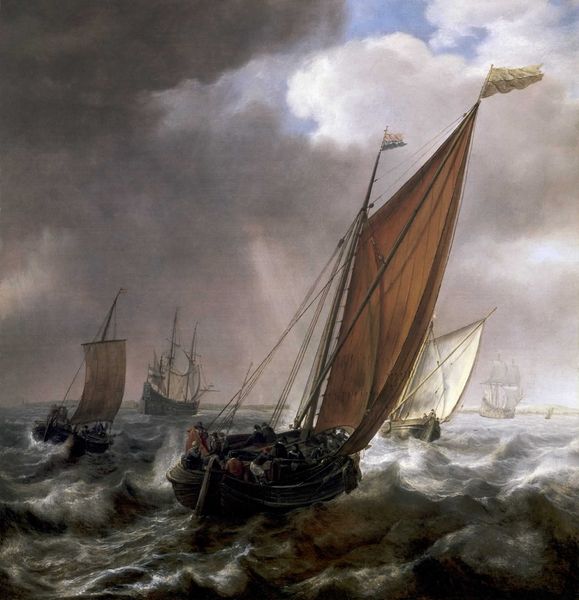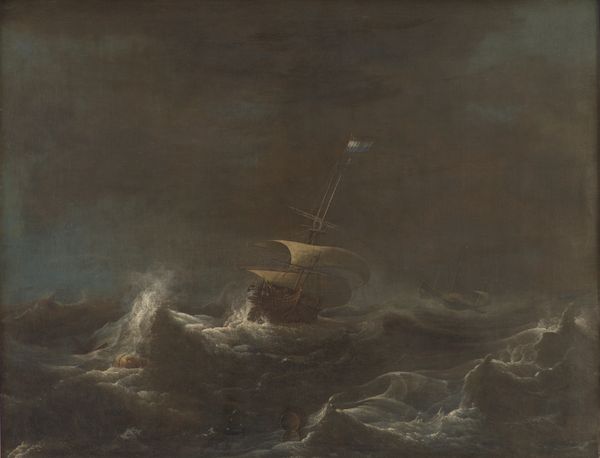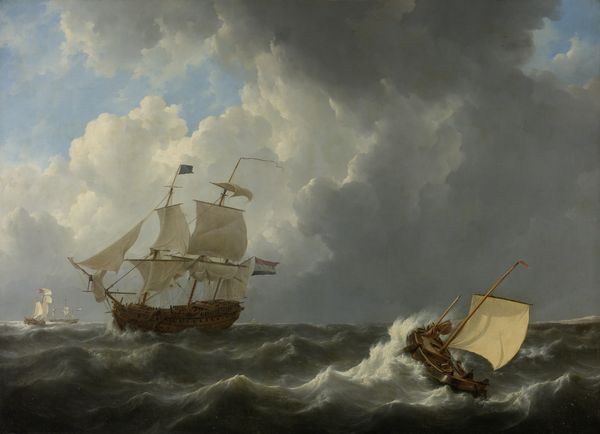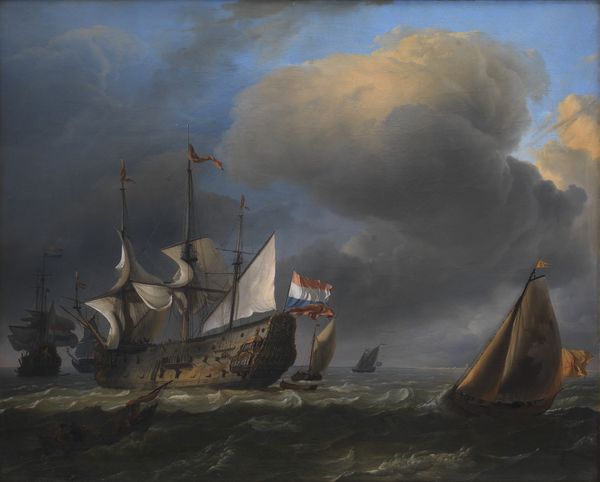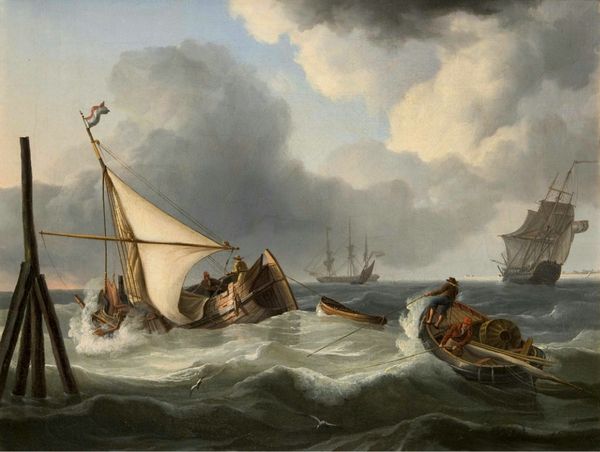
Dimensions: height 93.5 cm, width 135 cm, thickness 4.0 cm, depth 7.0 cm
Copyright: Rijks Museum: Open Domain
Editor: Hendrik Kobell’s *The Shipwreck*, painted in 1775, really captures a terrifying scene. The dark clouds and the way the waves crash against the ships create such a sense of drama. What are some of the historical factors that may have influenced Kobell in the making of this painting? Curator: This work really exemplifies the late 18th-century fascination with the sublime. Think about the social context: this was an era of burgeoning exploration and maritime trade. But with that came inherent risks and uncertainties. The shipwreck became a powerful symbol, not just of physical disaster, but of the fragility of human ambition against the overwhelming force of nature. Editor: So, it’s more than just a depiction of a shipwreck? Curator: Absolutely. Consider where paintings like this would have been displayed. They were often commissioned by wealthy merchants or displayed in public spaces, acting as both a cautionary tale and a testament to human resilience. It’s interesting to analyze how these images reinforced certain power structures, too. Who are the people on the shore? Are they passive observers or active rescuers? These details tell us a lot about social hierarchies and attitudes towards disaster relief at the time. And beyond that, what did “disaster” mean? Who cared? And why? Editor: I hadn’t thought about it in terms of power structures before. Now, seeing those figures on the shore makes me question their role differently. It really puts the piece into a different light. Curator: Precisely! By examining the painting's historical and social context, we can better understand its significance beyond just the dramatic scene it depicts. We move past aesthetics into considering power, disaster and what this image may have done in public imagination at the time. Editor: Thanks for helping me think through that. I see now how much richer the painting becomes when considering the societal context. Curator: It’s rewarding to consider all those components to better understand the artwork, from initial display to public consumption.
Comments
No comments
Be the first to comment and join the conversation on the ultimate creative platform.
